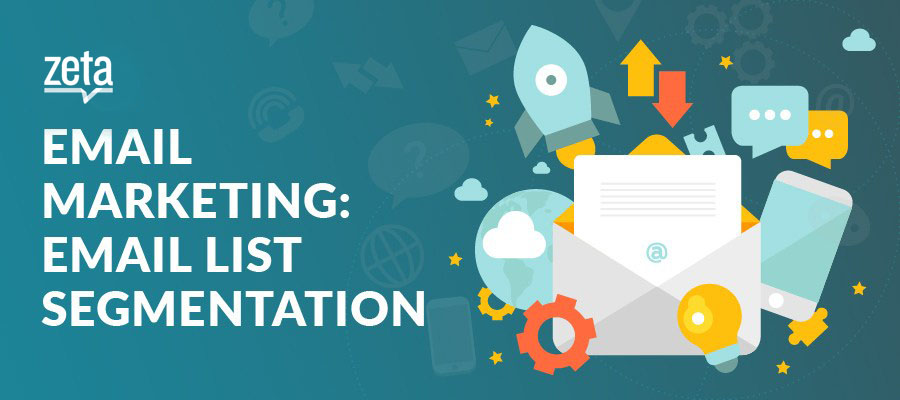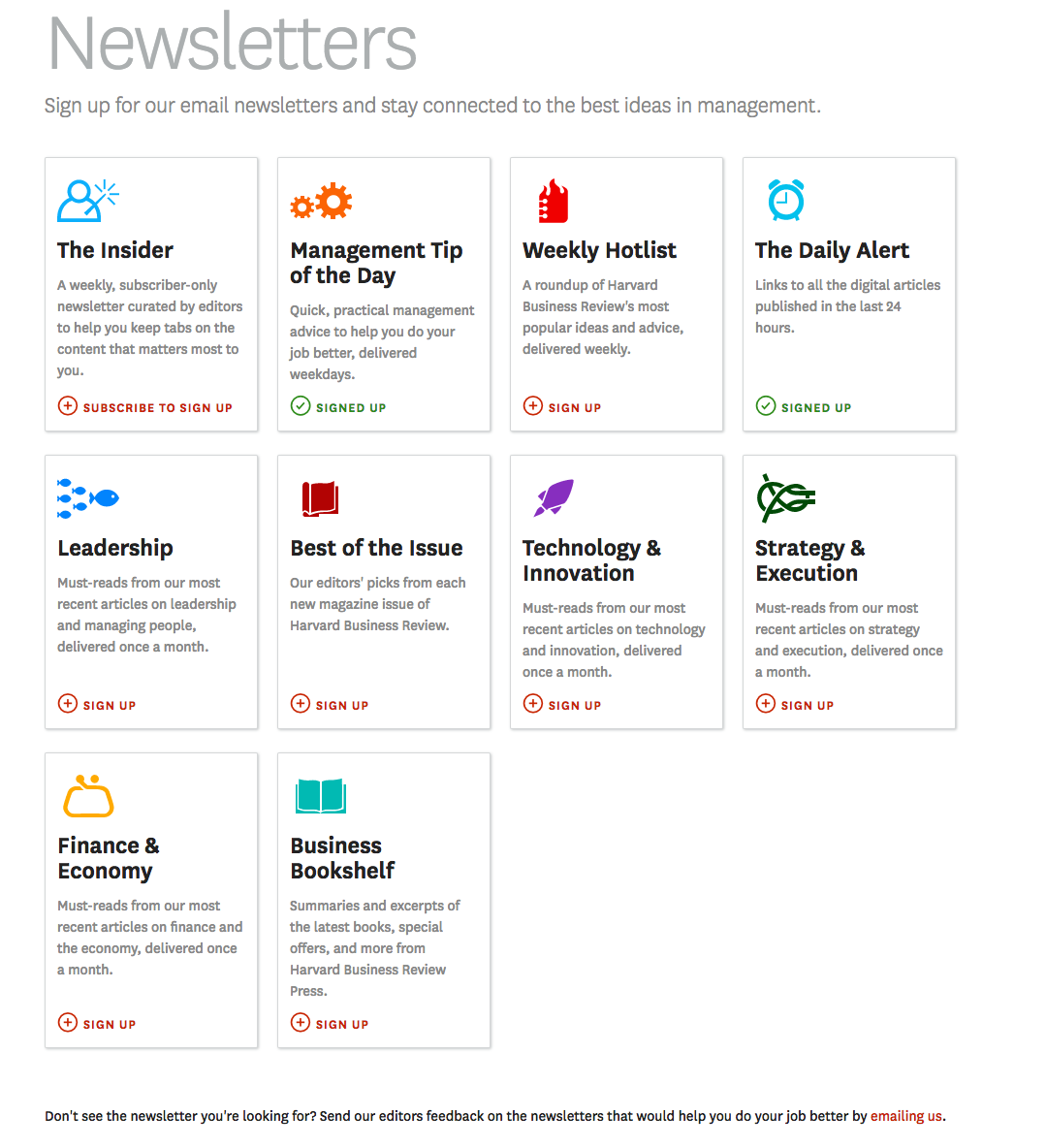
Email Marketing: 9 Ways to Segment your Email List
Most people who are new to email marketing usually make one mistake that affects the results of their campaigns. They ignore email list segmentation. According to DMA, 77% of email marketing ROI came from segmented, targeted, and triggered campaigns in 2015.
There are many ways to segment your email list before setting up strategic email marketing campaigns. However, coming up with the best segmentation method for the vast sea of user data is easier said than done.
To guide people who are struggling with the same, we have come up with a list of email list segmentation tactics that can help.
Ways to segment your email list for effective email marketing
The whole point of email list segmentation is to improve the effectiveness of email marketing and to drive better conversion and engagement rates. So without further ado, let’s look at the various tactics you can leverage to segment your email users:
1. Demographics
User demographics consists of important user data like –
- Age
- Sex
- Gender
- Interests
- Company Position
And much more.
This data is collected through signup forms and by tapping into data that your analytics tool (Google Analytics mostly) captures.
For example,
An eCommerce company can ask for the age of its customers while they signup. It can then figure out what percentage of its users are in the millennial age bracket and run tailored email marketing campaigns that showcase products that are trending amongst the audience in the same age bracket. This would result in an increase in the email engagement rate as well as conversion rate.
The most effective way to collect user demographics info is through properly laid out data collection forms on your website. If your forms ask the right questions, you collect richer data and stand a better chance of improving the overall effectiveness of your email marketing campaigns.
2. Time-based emails
Smart marketing automation and email marketing brands understand the need for send-time optimization when it comes to sending emails to customers.
The need to optimize email send-times can be very handy. How?
Well, modern consumers are a diverse bunch. They are active at different time periods. Some of them might open your promo email in the morning, whereas others might it during their lunch break. The chances of them opening and interacting with your emails is the highest during time periods when they are active.
Smart email marketing platforms like Boomtrain monitor the active time period of the email recipients. They can then tell you when they are most likely to open and read your emails. We at Boomtrain call this Primetime optimization – sending emails to customers based on their propensity to open and interact with them. Intuitive segmentation of the customers based on their activity is a great way of user segmentation while you’re running email campaigns.
Read more about Boomtrain’s Primetime optimization
3. Purchase Intent
This is another effective way to segment your email list. In one of our earlier posts, we analyzed how the eCommerce giant, Amazon does it really well.
Segmentation of your email users based on purchase intent can dramatically increase your conversion rate and decrease your cart abandonment rate.
Let me give you an example here. Recently I bought myself a set of reference monitors (Studio grade speakers) from Amazon. While doing my research I looked at a pair of Mackie CR4, Amazon’s AI engine was quick enough to notice it. I then resumed my product research before purchasing another set from Amazon 2 days later. Here’s what happened in those 2 days – Amazon sent me an email recommending the same speakers with a small price cut, piquing my interest. It was a good deal and so I went ahead and checked out the offer.
This email from Amazon addresses two purposes –
- Increase user engagement and bring back a prospect
- Lower cart abandonment rate
4. Past Purchase
Past purchases is another effective way to segment your users. It helps you understand your users’ inclination towards a specific category of product that you sell.
The easiest way to do this is to send out emails to your users about similar products based on their purchase history. For example: a person who has bought Apple products like the iPhone and MacBook, would very likely purchase an iPad as well. Sending the customer an email about the newest iPads would increase the chances of another purchase.
5. Position in Sales Funnel
Another way you can segment your email list is by referring to your users’ status in the sales funnel.
Someone at the top of your funnel should initially receive an email from you that helps them understand what you are all about and how your product can help customers like them. So, sending out a welcome series is the best way to interact with the top of the funnel leads.
On the other hand, if the prospect has been interacting with your emails for a little while and has shown interest in a particular aspect of your product, you can tailor your emails accordingly.
6. User Persona
We discussed in our first point how you can leverage user demographics to segment your email list. User persona-based segmentation includes demographic data as well as user-behavior-based data.
Creation of user personas involves in-depth tracking of the users’ web activity, such as purchase details, last active sessions, browsing history etc. These details should then be collated with the demographic details of the users to define user personas.
HubSpot provides a great way to start building your own user personas. You can check it out here.
7. Geography
There are a lot of ways to use geographical location data of your customers. Suppose you’re hosting an event in Boston, sending out emails only to your customers based out of Boston and the surrounding areas would improve the chances of them engaging with your email invites.
Here’s another example scenario – You run physical shops along with your online stores but are running an offline only sales campaign. It makes sense to send targeted emails only to people staying in cities where your offline stores are present.
Geographically targeted emails could increase email rates upto 68% compared to a general email open rate of 22% for the same event.
8. Email Activity based segmentation
Taking a cue from Udemy, one should also try to monitor user activity before setting up email marketing campaigns
Udemy has a great strategy to drive email engagement for their existing customers. If you’re not interacting with their emails for over a long period of time (1-2 months), Udemy sends an email to check your interest in their newsletters and other emails. You can choose to unsubscribe or stick to their email newsletters. This ensures that people who are not interested in their emails will opt out of the list and the list stays highly targeted.
This is also an indicator of whether your prospect is still interested in your products/services. A higher email engagement rate means that it’s time to move the customer to the next stage of your funnel. Similarly, a lower engagement rate means you need to assess the prospects’ place in your funnel.
9. Content Topic
This is another great way to segment your email list based on the content affinity of your customers/prospects. Services like Optin Monster, provide ways to populate various lists in your email providers based on the lead magnet that a prospect is drawn towards.
Another way is to have a detailed sign-up form so that you can tailor your communication based on their interest on various topics.
Harvard Business Review is one of the best examples of this type of segmentation. They have implemented an extensive form for anyone who wants to subscribe to their email newsletter.

Wrapping Up
Email List Segmentation is a necessity that you can’t ignore if you want to improve your email marketing results. A targeted email marketing campaign can lift your open rates and conversion rates in unparalleled ways.
Segmentation and building smarter email lists have become a top priority for most marketing focused brands today. If you have not shifted your focus in this direction, it is high time that you do.


